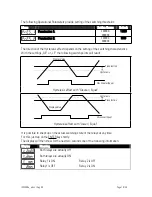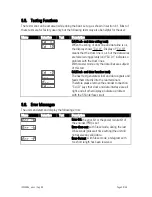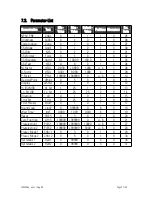
IX34208a_e.doc / Aug-09
Page 31 / 40
6.
Special Functions
6.1. Linearization
This function allows converting a non-linear input signal into a linear presentation or vice-
versa. There are 16 interpolation points available, which can be freely arranged over the whole
measuring range in any distance. Between two points the unit automatically will interpolate
straight lines.
It is advisable to set many points into areas with strong bending, and to use only a few points
in areas with little bending. „Linearisation Mode“ has to be set to either „„1-quA“ or „„4-quA“ to
enable the linearization function (see subsequent drawing).
Parameters P01_x to P16_x select 16 x- coordinates, representing the display values which the
unit would normally show in the display. With parameters P01_y to P16_y you can specify,
which values you would like to display instead of the corresponding _x values.
This means e.g. that the unit will replace the previous P02_x value by the new P02_y value.
x
With respect to the consistency of the linearization, the x- registers have to use continuously
increasing values, e.g. the x- registers must conform to the constraint
P01_X < P02_X < … < P15_X < P16_X.
x
Independent of the selected linearization mode, the possible setting range of all registers
P01_x, P01_y,…, P16_x, P16_y is always -199999 … 999999
x
With measuring values lower than P01_x the display will always be P01_y
x
With measuring values higher than P16_x, the display will always be P16_y.
x
y
P1(x)= 0
P1(y)= 0
Linearization Mode = 1_quA
x
y
Linearization Mode = 4_quA
P1(x)= -1000
P1(y)= 900
P8(x)= 0
P8(y)= 750
P16(x)= +1000
P16(y)= - 600
*)
P16(x)= 1000
P16(y)= 800
*) Mirror of positive range










































